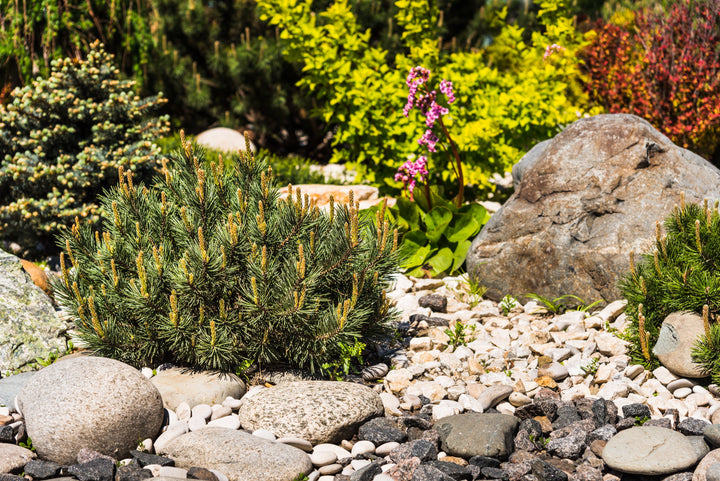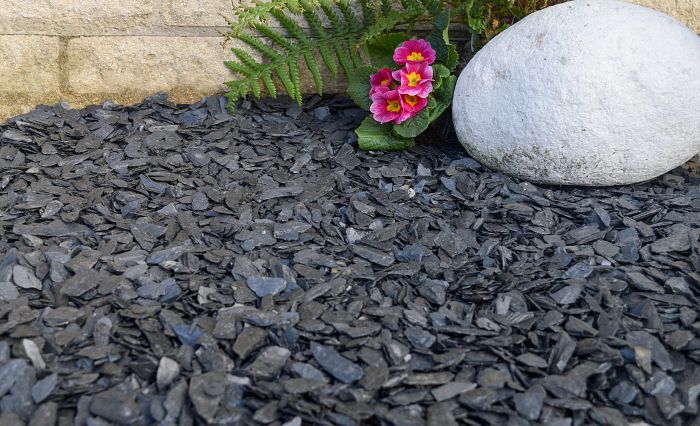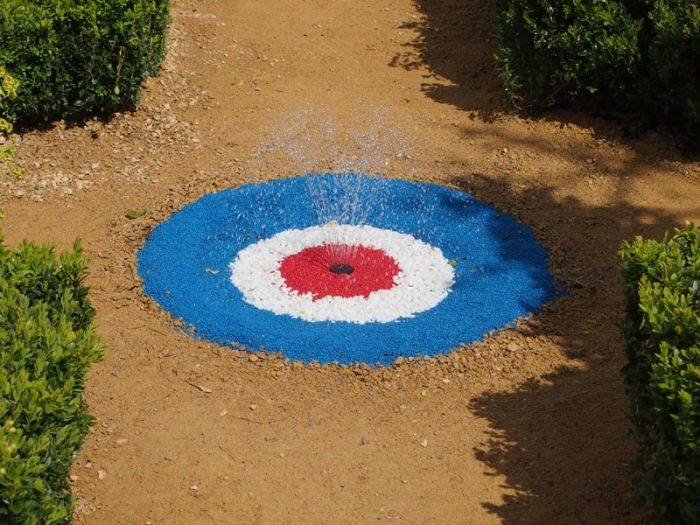Low maintenance garden ideas: tips and inspiration for an easy-care outdoor space
Picture this: A stunning garden that looks like it's been professionally landscaped and maintained, but requires barely any effort from you. No more endless weekends spent weeding pathways and flowerbeds or mowing unruly lawns. Well, the good news is, no matter what size of garden you are dealing with, this might actually be much easier to achieve than you think.
Here at Decorative Aggregates, we've spent nearly 40 years helping customers transform their outdoor spaces into low-maintenance havens that look stunning with minimal effort. By working with gardeners, landscapers, and homeowners, we understand exactly what is needed to create a gorgeous outdoor space that practically takes care of itself - and our extensive product range reflects this.
So, whether you're a busy professional, a time-strapped parent, or simply someone who'd rather enjoy their garden than work in it, a low-maintenance garden is the ultimate solution. In this guide, we provide our comprehensive roadmap to creating a garden that's as easy to maintain as it is beautiful.
What is a low maintenance garden?
A low-maintenance garden is exactly what it sounds like - a carefully designed outdoor space that dramatically reduces the time and energy required for upkeep. It's not about creating a barren landscape - far from it - but about smart design, strategic material choices, and working harmoniously with your local environment.
Why choose a low-maintenance garden?
Modern life is busier than ever. Between work commitments, family responsibilities, and everything else, a lot of us simply don't have the luxury of spending entire weekends tending to a high-maintenance garden. A low-maintenance garden isn't just a convenience - it's a lifestyle solution that gives you back your precious time and reduces unnecessary stress.
Just take a minute to think about the traditional gardening approach. Homeowners often find themselves trapped in a never-ending cycle of planting, pruning, weeding, and replacing plants that didn't survive the season. Low-maintenance gardens give us that time back by offering a sustainable and intelligent alternative to traditional landscaping.
How to create a low maintenance garden
Creating a low-maintenance garden is part art, part science. It's about understanding your space, working with nature, and making strategic choices that reduce ongoing effort. Think of it like designing the perfect, efficient kitchen - every element has a purpose, and nothing is left to chance.
Understanding your garden's unique landscape
Before diving into design, take time to truly know your outdoor space. Every garden is unique, with its own microclimate and challenges. Professional landscapers know that successful garden design begins with careful observation.
Key factors to consider:
- Soil type and drainage
- Sunlight patterns
- Local climate variations
- Existing landscape features
- Wind exposure.
Strategic planning approaches
1. Comprehensive layout design
Garden layout is the foundation of low-maintenance design. The goal is beauty with minimal effort. For this reason, bear the following in mind before making any decision:
- Embrace simplicity in design
- Create clean, straight lines and geometric shapes
- Minimise complex border configurations
- Design with future maintenance in mind
- Allow adequate space between planting areas
- Create logical, purposeful zones.
Pro tip: Curved borders look attractive in magazines, but straight lines are a low-maintenance gardener's best friend.
2. Hardscaping strategies
Hardscaping is the secret weapon of low-maintenance gardens. By incorporating non-living elements, you can dramatically reduce ongoing work:
- Use decorative aggregates for stable ground cover
- Install low-maintenance pathways
- Create structural elements that define spaces
- Implement gravel or stone features
- Design multi-functional areas.
3. Strategic plant selection
Choose staple UK garden plants that look nice and don't require constant attention:
- Native species adapted to local conditions
- Drought-resistant varieties
- Perennials that return yearly
- Plants with natural pest resistance
- Slow-growing shrubs and trees.
Practical implementation strategies
Once you've assessed your garden's unique characteristics and developed a strategic approach to layout and plant selection, it's time to bring your low-maintenance garden vision to life. This is where your planning transforms from concept to reality. Implementing your design requires careful consideration of each element, ensuring that every choice contributes to a garden that looks beautiful with minimal ongoing effort.
1. Garden zoning
Divide your outdoor space into distinct, purposeful zones:
- Low-maintenance aggregate areas
- Minimal planting zones
- Functional spaces
- Carefully considered plant beds.
2. Foundation preparation
A successful low-maintenance garden starts with solid groundwork. Before starting on the implementation of your new design itself, think about doing the following:
- Improving soil quality
- Installing high-quality weed membranes
- Using gravel grids for stable surfaces
- Ensuring proper drainage
- Adding decorative aggregate layers.
3. What materials are best for a low-maintenance garden?
Choosing the right materials is crucial to creating a low-maintenance garden. At Decorative Aggregates, we've seen how strategic material selection can transform a high-maintenance garden into a low-effort landscape. With this in mind, there are three core materials needed to create the backbone of any good low-maintenance garden.
Gravel
Gravel is the unsung hero of low-maintenance garden design. This versatile material offers a perfect combination of functionality and aesthetic appeal. It's a game-changer for homeowners looking to reduce garden maintenance while creating a stunning outdoor environment. The right gravel can suppress weeds, improve drainage, and create visually interesting spaces with minimal ongoing effort.
Popular low-maintenance garden gravel options include:
-
Polar White: Brightens spaces and creates a modern, clean look
-
Cotswold Buff: Provides a warm, natural appearance
-
Slate Chippings: Offers rich texture and deep, interesting colours
-
Coloured Granite: Adds unexpected visual interest and variety
- Mixed Size Aggregates: Create depth and texture in garden design.
Gravel Grids
Gravel grids are the structural backbone of a low-maintenance garden design. By distributing weight evenly and improving drainage, these easy-to-install grids solve multiple garden maintenance challenges in one simple solution. They're particularly useful in high-traffic areas, creating pathways and ground cover that remain stable and attractive with minimal ongoing maintenance.
Weed membranes
Weed membranes create a protective barrier that prevents unwanted plant growth while allowing water and nutrients to penetrate the soil. By blocking weed seeds from germinating and establishing root systems, weed membranes dramatically reduce the time and effort required to maintain a clean, tidy garden. They're essentially a force field against unwanted vegetation, giving you a cleaner, more manageable outdoor space with minimal intervention.
At Decorative Aggregates, we've seen how these materials can transform gardens from high-maintenance headaches to effortless outdoor spaces. The key is understanding how to use them strategically and combining them to create a landscape that looks professionally maintained with minimal effort.
How can I use gravel and aggregates in my garden?
As mentioned above, gravel and aggregates are low-maintenance garden staples. Incredibly versatile and durable, these materials can transform your garden from a maintenance-intensive space to a low-effort landscape. However, these aren't just decorative elements - they're functional solutions that solve multiple gardening challenges while creating stunning visual effects.
(H3) Practical applications
When it comes to practical applications, gravel and aggregates can be implemented into your garden design in a number of creative ways. For example:
-
Ground cover: Replace traditional grass lawns with decorative aggregates to eliminate mowing and reduce water consumption
-
Pathway creation: Design safe, functional walkways that look great with the help of gravel grids
-
Border definition: Use different coloured aggregates to create clear, low-maintenance garden boundaries
-
Drainage solutions: Implement aggregate areas in locations prone to water pooling
- Planting zones: Create defined areas around plants that suppress weeds and retain moisture.
Design Strategies
Gravel isn't just a material - it's a design tool. By layering different aggregate sizes and colours, you can create depth, texture, and visual interest that remains consistent with minimal maintenance. Consider creating multi-dimensional spaces that combine various aggregate types, using them to transition between different garden zones.
Low maintenance small rock garden ideas
If you're working with a compact outdoor space, a small rock garden can be a stunning, low-effort solution. Rocks and boulders bring natural beauty, structure, and texture to your garden while requiring virtually no upkeep. They also work well in gardens of any size, making them ideal for space-conscious designs.
Start with a variety of rock sizes - larger boulders for focal points and smaller stones or gravel for filling in gaps. Pair these with drought-resistant plants like succulents, ornamental grasses, or alpines to add pops of colour and greenery. Arrange rocks and plants in clusters for a natural, organic look, ensuring plenty of space between elements to minimize weeding and trimming.
For added interest, use contrasting aggregates to create defined pathways or borders. The result? A visually striking, easy-to-care-for garden that blends perfectly into its surroundings while saving you time and effort.
For more information about your decorative aggregate needs, or for further advice regarding low-maintenance garden materials, browse our site or get in touch today.


